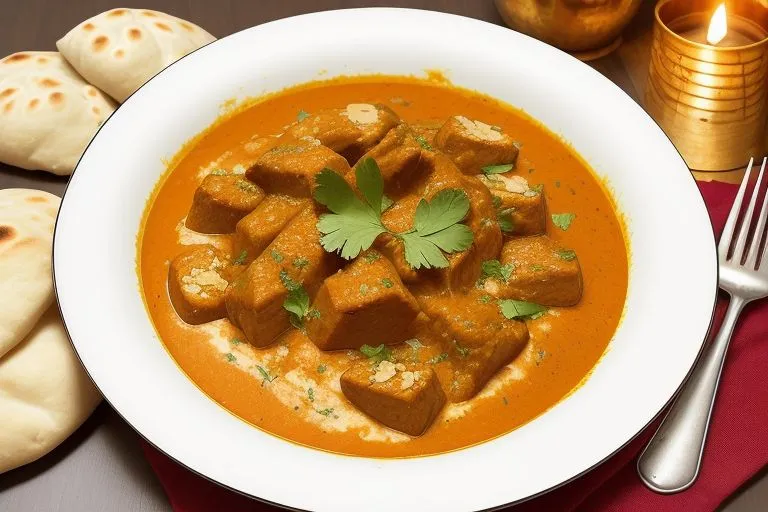What You Should Know If You’re Watching Your Diet
Okay, let’s be real for a second—Indian food is absolutely packed with flavor. Rich sauces, warm spices, slow-cooked meats. It’s a sensory overload in the best way possible. And one dish that always steals the show? Lamb korma. It’s creamy, comforting, and feels like royalty on a plate. But if you’re watching your health or trying to eat smart, you’ve probably stopped mid-bite wondering about lamb korma calories—how heavy is it really, and can it actually fit into a balanced diet?
If you’ve had it before, you already know what I mean. Creamy, cozy, just the right amount of nutty sweetness. It’s basically comfort food dressed up in royal clothes. But—here’s the catch—if you’re even remotely watching what you eat, you’ve probably paused mid-bite and thought, “Uh-oh. How heavy is this stuff really?”
Is it a total calorie bomb? A once-a-year cheat meal? Or—dare I say—something you can actually work into your weekly rotation without throwing all your health goals out the window?
Let’s talk about that.
In this article, we’ll break down the facts about lamb korma calories, talk about how this dish fits into a balanced lifestyle, and even look at ways to make it lighter, without sacrificing that delicious flavor. We’ll also touch on how lamb shahi korma differs and why it might sneak in even more calories than you think.
First, What Is Lamb Korma?
Before diving into calorie counts, it’s worth understanding what lamb korma actually is, especially if you’ve only had it a few times or you’re just getting into Indian cuisine.
Lamb korma is a well-known dish from North India. It’s made with delicate pieces of sheep cooked gradually in a thick, rich sauce. The sauce, as a rule has yogurt, cream, ground nuts like almonds or cashews, and warm flavors such as cardamom, cinnamon, and coriander. It tastes smooth, wealthy, and a little bit sweet.
Now, there’s also a more luxurious version called lamb shahi korma, and yep, shahi literally means royal. This one’s usually reserved for special occasions. Shahi lamb korma often includes even more cream, ghee (butter), and sometimes saffron. In short, it’s richer, heavier, and definitely more decadent.
Sounds delicious, right? But how many calories in lamb korma are we talking about here?
How Many Calories in Lamb Korma?
The dubious portion is that the reply changes a parcel. It all depends on how it’s cooked, what fixings are utilized, and what portion estimate you’re really eating.
A standard restaurant portion of lamb korma (about 300 grams, give or take) can pack anywhere from 630 to 850 calories, not including rice or naan. Why so many? Here’s a quick breakdown to give you an idea:
- Cooked lamb (150g) – 280 to 330 calories
- Ghee or oil (1–2 tablespoons) – 120 to 240 calories
- Yogurt or cream (100g) – 100 to 150 calories
- Ground nuts or paste – 100 to 120 calories
- Onions, garlic, spices – 30 to 50 calories
Yep, it adds up fast. And remember, this is just the curry.
Presently, toss in a glass of basmati rice (around 210 calories) or a huge feathery naan (around 300 calories), and your total for supper can arrive somewhere between 1000 to 1300 calories. That’s more than half of what most individuals ought to eat in an entire day if they’re attempting to remain healthy.
For a more detailed breakdown of lamb’s nutritional value, check out the Lamb Korma Nutrition Facts.
And What About Lamb Shahi Korma?
If you’re wondering whether lamb shahi korma is any better or worse, the answer leans toward worse, calorie-wise.
Because of the added butter, cream, nuts, and sometimes even fried onions or saffron, shahi lamb korma can easily hit the 800 to 1000+ calorie mark per serving. Again, that’s before the rice or bread.
So if you’re sitting down to a hearty plate of shahi lamb korma with naan, it’s not hard to hit 1300 to 1500 calories in one sitting.
That doesn’t mean it’s “bad,” by the way—it just means it’s rich. There’s a big difference. And that brings us to an important question…
Is Lamb Korma Off Limits If You’re Health-Conscious?
Short answer? Not at all. But like most things in life, it’s all about balance.
Let’s say your daily calorie target is around 2000. If you’re having lamb korma calories hit around 850 at dinner, you’ve still got room to play with for the rest of your meals. Some people even use intermittent fasting or eat lighter breakfasts and lunches so they can enjoy richer dinners like this without any guilt.
Plus, lamb isn’t just empty calories. It’s packed with:
- Protein – great for muscle repair and keeping you full
- Iron and B vitamins – support energy levels and overall health
- Zinc – good for immunity
- Healthy fats – from nuts and ghee (in moderation)
So yeah, it’s not “junk food” by any means. But it is calorie-dense.
For healthier high-protein options throughout the week, check out our in-depth guide to the Best Protein Powders 2025.
Want to Lighten It Up? Here’s How
The good news is, if you make lamb korma at home, there are plenty of ways to enjoy it without the calorie overload. Here’s how I usually lighten it up:
1. Use Leaner Cuts: Instead of lamb shoulder or ribs, go for leg or loin. Less fat, but still tender.
2. Trim the Ghee: Use just one tablespoon of oil or ghee—or even try a mix of olive oil and a bit of ghee for flavor.
3. Swap the Cream: Low-fat Greek yogurt gives you the same creaminess with way less fat. Bonus: it adds protein too.
4. Cut Back on Nuts: A spoonful of almond or cashew paste is plenty. You don’t need a whole handful.
5. Bulk with Veggies: Attempt to include cauliflower, spinach, or peas in the dish. They offer assistance to fill you up, but don’t include numerous additional calories.
6. Ditch the Naan: Okay, I know naan is amazing. But if you’re watching your intake, try brown rice or even cauliflower rice on the side instead.
7. Stick to a Reasonable Portion: About 150–200g of curry is enough. Fill the rest of your plate with salad or steamed veggies.
With these changes, a homemade serving can be brought down to 450–550 calories, and honestly? Still tastes amazing.
Fitting It Into Your Weekly Plan
Here’s a quick trick: don’t avoid lamb korma altogether—just plan for it.
You might set one or two days a week for higher-calorie meals and eat lighter the rest of the week. Here’s what that might look like:
Day Dinner Plan Notes
| Day | Dinner Plan | Notes |
|---|---|---|
| Monday | Grilled chicken + salad | Low-cal, high protein |
| Tuesday | Veggie curry + brown rice | Fiber-rich, light option |
| Wednesday | Lamb korma night | Moderate portion, homemade |
| Thursday | Lentil soup + toast | Easy and low-cal |
| Friday | Fish + quinoa | Balanced and light |
| Saturday | Shahi lamb korma treat | Enjoy, just portion it well |
| Sunday | Stir-fry + eggs | Quick and satisfying |
By keeping the rest of your week pretty balanced, you make room for those “treat” meals without any drama.
Final Thoughts
So, here’s the deal: yes, lamb korma calories can be pretty high, especially if you’re eating out or going all-in with the cream and ghee. And yes, shahi lamb korma can take it to an even richer level. But that doesn’t mean you have to say goodbye to your favorite dish.
If you’re considering how many calories in lamb korma there are, it depends on how it’s made, but with a little mindfulness and a few swaps, you can still appreciate it as a part of a strong, balanced way of life.
Food isn’t just fuel, it’s culture, comfort, and something to be enjoyed. So if lamb korma is your thing, don’t stress. Just plan for it, portion it smartly, and balance it with your other meals. Your taste buds (and your goals) can both win.
Keywords:
Lamb Korma Calories
What Is Lamb Korma?





